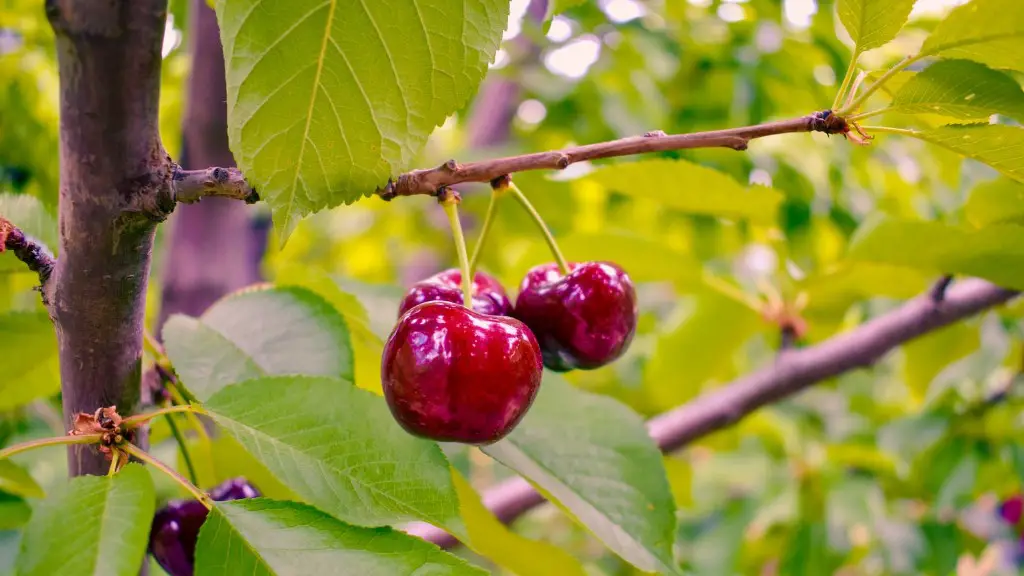What Is a Cherry Tree?
Cherry trees are deciduous hardwood trees belonging to the genus Prunus. These trees typically bear heart-shaped leaves and have a smooth, greyish bark. Cherry trees are known for its breathtaking beautiful flowers and delicious fruits that range from sweet to sour. Cherries can be eaten fresh, processed and canned, or used as an ingredient for desserts and drinks.
The Growing Process of Cherry Trees
Cherry trees can be propagated by cultivating existing trees or by planting cherry tree seeds. Some of the most common types of cherry trees are sour cherries, sweet cherries, and hybrid cherries. Sour cherry trees produce small, tart cherries while sweet cherry trees produce larger, sweeter fruits. Hybrid cherry trees are a cross between the two and produce a variety of colored fruits, though they maybe not quite as flavorful as either of their parent trees.
Can You Start a Cherry Tree From a Seed?
It is possible to start a cherry tree from a seed, however it is not the most recommended method for growing a cherry tree. Even if you successfully grow a cherry tree from a seed, it will take about 7 to 10 years for the tree to bear fruit. Additionally, the variety of cherry tree produced from the seed may not be the same as the one you planted. it may also have different characteristics, such as growth rate, fruit size, etc.
If you want to ensure that you get the exact cherry tree variety that you want and that this tree will start producing earlier, you may use ways of cultivation such as cuttings, budding or grafting instead.
Germination Process
First, the cherry tree seed should be harvested when the fruit dries up during fall. You can store the harvested seeds in an airtight container in a cool, dry place. Wait until spring to start the germination process. To do this, place the seeds in a moist paper towel or cotton ball, making sure that the tools you use are clean. Place the moist paper towel and/or cotton ball with the seed inside a sealed plastic bag or container. Place the bag or container in the refrigerator for several months.
After the cold-stratification process is complete, fill a pot with a quality potting soil and moisten it before planting the seed. Plant the seeds about 1/2 inch into the soil and cover with a thin layer of the soil. Place the pot in a sunny spot and spray the soil with water regularly. Once the seeds germinate, it is time to transplant them.
Transplant and Care
Transplant the cherry tree seedlings after they are about 6-10 inches tall. When transplanting, make sure to dig a hole wide and deep enough to accommodate the root ball. Apply organic fertilizer to the soil, around the base and near the roots of the tree. Next, place the seedlings into the soil, fill the extra space with soil and apply a 2in layer of organic mulch.
Keep the soil moist and fertilize your cherry tree periodically throughout the spring and summer. Prune your cherry tree during the cooler months of autumn and winter and keep mulch or weed-free around the base to avoid pests.
Common Problems and Solutions
Common pests that attack cherry trees including aphids, caterpillars, and leaf spot. Spraying the tree with an insecticide may help to control the infestations. Fungal and bacterial diseases, such as bacterial canker and root rot, may occur if the trees are not properly tended and watered. To prevent fungal and bacterial diseases, proper pruning and watering techniques should be followed and copper-based fungicides should be used if necessary.
Harvesting and Storing
Cherry trees usually take 4-6 years to reach their prime production, but the precise timing may vary depending on the climate and soil where you planted the tree. When ripe cherries are ready for harvesting, they will have a deep red or blackish red color and will easily come off the stem when gently tugged.
After harvesting, the cherries should be washed and stored in the refrigerator for 1-2 days. To store cherries for longer, store them in the freezer. They can keep for up to one year.
The Benefits of Growing Cherries From Home
Growing cherry trees from home has many advantages. Not only does it provide a great source of tasty fruits, but it also helps save money and reduce food waste. Growing a cherry tree also helps add visual beauty to any home.
Additionally, cherry trees can bring a sense of connection to the environment and provide a space to relax and experience nature. Cherries are also rich in antioxidants, vitamins and minerals that are essential to the body.
The Bottom Line
Growing a cherry tree may take a bit of patience and effort, however the rewards can be great. Starting a cherry tree from a seed can be done, but it may not provide the same results as using other methods of cultivation. With proper soil conditions, nutrients and care, your cherry tree can produce delicious fruits and provide a great source of tasty snacks for years to come.

